The best way to break in work boots is to soften the leather until it’s pliable enough to feel comfortable. The safest way to soften the leather is to wear the boots around the house while wearing thick socks. You can speed up the process using a leather conditioner or boot stretching spray, quickly making the leather fibers more flexible.
There’s something satisfying about slipping on a new pair of work boots. They’re clean, look great, and you can’t wait to get to work to show them off.
The problem is, by the time you’ve got to work, you’re limping like a sad crab because you feel like your boots are trying to rub your toes off. The dreaded breaking-in period has begun.
You’re in for weeks of whimpering and aching, going through band-aids like they’re chewing gum.
Or you were before you read this guide.
I’m here to show you how to quickly break in your work boots without damaging them or your feet.
Table of Contents
What You’ll Need to Break in Your New Work Boots
Depending on which method (or methods, some of my hacks work best as a combo) you choose, you’ll potentially need the following:
- Thick Socks – I recommend the Camel City Mill Heavyweight Work Sock as they’re padded yet breathable
- Mink Oil – Fiebing’s Mink Oil Paste is excellent at softening leather
- Boot stretching spray – FootMatters Pro Boot Spray safely softens and stretches leather
- A Boot stretcher – a FootFitter Premium Pro Stretcher gets to every part of your work boot
- Clean Microfiber cloth
How to Break in Work Boots: 9 Hacks to Speed up the Process
The more effort you put in to break in your work boots, the quicker you’ll see results. It’s why doing nothing means you’ll probably take weeks or more to break your boots in just by wearing them to work.
If your old work boots are still wearable, you’re better off wearing those for an extra week while you implement your hacks—it’ll give your new boots time to break in without injuring your feet.
I’m going to assume you’ve bought the right size and checked out sizing guides such as the Ariat Sizing Guide before buying. My hacks are proven, and if I can blow my own trumpet, pretty awesome, but I can’t make your size eight boots fit your size 10 feet.
1. Wear Them Around the House
Wearing your boots in the comfort of your home has many advantages.
You can take them off as soon as they start to feel uncomfortable, and if you’ve got the wrong size, you’ll not mark them, so you’ll be able to get a refund or swap for the correct size.
Step 1: Build Up Slowly
Don’t just throw your new boots on and wear them all day at home—you’ll quickly find they start to rub your feet, causing precisely what you’re trying to prevent.
Ideally, you’ll want to start for 15-30 minutes daily, preferably in the morning before work. Your feet can swell during the day, so morning is when they’re at their perfect size.
Slowly build up the time you wear your boots and start putting them on around the house in the evening. Eventually, you’ll get to the point you’re wearing them all weekend with no discomfort.
Step 2: Use the Stairs
One of the key areas of your boots that usually rubs are the outsoles and upper, so the quicker they’re flexing with your foot, the better. The best way to speed that up is to walk up and down stairs in your boots.
The forced flexing will speed up the breaking-in period, and by the time you’re working in your boots, you’ll notice no rubbing on the top of your feet. You can combine using the stairs with hack five on my list to add even more flexibility to your boots.
Step 3: Repeat Until Your Boots Are Broken In
It’s not the quickest hack, but it is one of the safest and most effective.
You’re breaking in your boots without the agony, and they’ll soon fit perfectly. Patience is the key, as is repetition. Wear your boots a little, but often, every day until they’re broken in.
2. Padding Out With Thick Socks
Wearing the right socks with your work boots makes all the difference, especially when you’re breaking them in. The more padding between your feet and the stiff leather, the better.
Wearing thick work socks has several benefits, your feet are more comfortable, and the extra padding will passively push against your boots, stretching them out. It’s a win all around, but finding the right socks is essential.
If you’ve tried wearing two pairs of socks to break in boots, you’ll know your feet quickly overheat and feel uncomfortable. You’re after a sock that’s durable and thick but also breathable.
The Camel City Mill Heavyweight Work Sock fits the bill perfectly. It’s thick enough to stretch your boots, thermoregulated to stop your feet from overheating or freezing, and perfect for work boots.
We all know that work boots eat socks for breakfast. Many socks aren’t durable enough to last long in a work environment, but the Camel City Mill sock is built to last thanks to its high-density merino wool.
The Camel City Mill Heavyweight gives me the most comfort because of the added padding through the toe, arch, and heel. These are also made with a high percentage of Merino wool, so they insulate well without making your feet sweaty.
Step 1: Pull Your Socks Up
I always combine this hack with walking around at home to break in my boots. The extra padding stops my feet from becoming sore, and the bonus of the extra stretching is excellent.
Before breaking in your boots at home, wear your thick socks.
Step 2: Wear Your Boots Over Longer Periods
With thick socks, you can get away with wearing your work boots for long periods. Rather than 15-30 minutes at a time, I’ve found that an hour or two a day will speed up the process.
By all means, try longer periods without thick socks on, but don’t come crying to us when you’re nursing blisters the size of golf balls.
Step 3: Rinse And Repeat
Like before, build up your tolerance to your new boots by wearing them for extended periods.
Keep wearing your thick socks as they’ll push out the leather even more, and as your socks contour to your feet, the boots will stretch out in all the right spots, making them comfortable to wear all day.
3. Use Boot Stretching Spray
If you’re in a rush to get your boots on, then a boot stretching spray will help by softening and stretching the leather upper. I use the FootMatters Pro Boot Spray as it’s a proven brand that won’t damage the leather of my boots.
Usable on leather, suede, nubuck, and canvas, the FootMatters Professional Boot Spray is magic in a bottle. If you’re suffering from tight spots on your work boots, spraying them with boot stretching spray will soften the leather fibers while you work, gently expanding your boot for a perfect fit.
This option works well when combined with a boot stretcher, but you can easily spray your boots and wear them around the home.
As well as combining well with hack 8 (using a boot stretcher), you can also combine using a boot stretching spray with hack five by bending your boots to speed up the breaking-in process.
Step 1: Target The Whole Upper
Boot stretching spray can target specific areas on your boots if they’re a bit tight.
As you’re breaking in new boots, we’ll want to make sure every part of the boot is flexible enough to be comfortable, so give your boots a light coating all over the upper leather.
Step 2: Stretch Or Wear Your Boots
Once you’ve got a coating of stretching spray on your boots, it’s time to stretch them out a little.
You can do this by putting some thick socks on and then wearing your boots around the home, or use a boot stretcher like the FootFitter Premium Pro Stretcher.
Stretching your boots isn’t an exact science, but with the FootFitter Premium Pro, it can be easy and uniform. If you don’t have the time to break in your boots over time, a few nights with the FootFitter will have your new boots fitting like a glove, if they made gloves for feet, that is.
Step 3: Keep Testing The Fit
While the leather is slightly damp and the fibers are looser, you’ll find it easier to break your boots in.
I’ve found that it takes a few sessions before the results are noticeable, and after using your stretching spray daily for a week, you’ll see great results. If you use a boot stretcher, ensure you’re checking the fit. You don’t want to stretch the boots until they’re loose.
4. Conditioning Softens the Leather
If you wear leather boots often, either for work or as dress boots, you’ll know that they look better with a little TLC. If you already look after your existing boots, you may already have some Mink Oil.
Maintaining the leather by using a conditioner like Fiebing’s Mink Oil Paste keeps your boots healthy, hydrated, and, more importantly for this hack, flexible.
Your new boots already look fresh, so you’re not using Mink oil to smarten them up. You’re going to use it to soften them up.
Another thing to be aware of is that mink oil can alter the color of your boots, so it’s not always the best choice if you’ve bought light-colored boots. If you don’t mind the leather looking darker because they’re work boots, it’s time to apply the oil.
Whether stretching out a new pair of boots or adding a layer of protection to an old favorite, Fiebing’s Mink Oil Paste is a nourishing, natural byproduct that’ll keep your leather feeling soft, fresh, and pliable. A coat every six months will keep your boots hydrated and happy.
Step 1: Applying The Mink Oil
You only need to apply a small amount of mink oil to your boot—a blob about the size of a dime is plenty. The Mink oil should be soft but not liquid. Room temperature is fine. It’s the perfect consistency to rub into your boots.
Rub the oil into your boot with small circular motions. Don’t leave it sitting on your boots, as it can leave a darker patch. Apply small amounts, rub it in thoroughly, then move on to the next section of your boot.
Step 2: Buff up Your Boots
After applying the oil to both boots, leave them to stand for a while to allow the oil to soak into the fibers. This process eventually softens your boots, making them easier to break in.
After 10 minutes, use a clean microfiber cloth to buff up your boots. Not only will this step remove any excess oil, but it also helps your boots keep a consistent color.
Buffing up your boots also forces any remaining oil deep into the leather fibers.
Step 3: Wear Your Boots
After a few hours, the mink oil should have dried on your boots, leaving them softer and a shade or six darker. Now’s the time to wear them around the house to stretch them out a little.
Get your Camel City Mill Heavyweight Work Socks on, put your boots on, and wear them around your home for an hour or two. You can repeat the wearing process over a few days to help, and you’ll soon have fully broken-in boots.
5. Bending and Flexing Your Boots
Because the outsole and thick leather upper on a new pair of work boots are invariably stiff, putting some muscle power in is a great idea to help the breaking-in process.
You’ll not be able to damage your new boots by bending them. You’re in the wrong business if you’re strong enough to tear a new pair of leather boots in half. Once your boots are flexible, they’ll break in a lot easier.
Oh, and don’t try this while you’re wearing your boots.
Step 1: Flex the Midsole
I often sit watching a movie after work, clutching a boot with both hands as I bend the midsole to soften it up. It drives my wife mad, but she’s not the one having to wear them.
Grab the heel and toe of your boot with each end, and bend the toe upwards and then downwards. The easier it becomes, the softer the leather gets, which helps break the boot in.
Step 2: Squash the Heel
The leather around the heel is one of the toughest places to break in on a new pair of boots. It’s very rigid, is often made of thick leather, and can even have foxing around the heel, making it even stiffer.
I lay my boot down on its side and then push down on it with my foot. Turn the boot over and repeat the process, and over a few days, you’ll feel the difference as the leather becomes more pliable.
6. Change the Lacing Combination
If you notice that the top of your foot seems to be the biggest issue when breaking boots in, it may be the lacing that’s too tight or in the wrong place.
It could be as simple as missing out on an eyelet or trying a new combination. You don’t need to be an expert in knots, as this great guide on How to Lace boots Like a Pro shows.
I use the Army method of tying my boots, not because I was in the Army, but because I find it the most comfortable way to lace them.
I recommend you check out the army method shown in the above video, as it’s a lot easier to follow along by watching the Army method and lacing your boots up at the same time.
7. Force the Leather to Stretch
There’s nothing wrong with using a bit of brute force now and then, and a straightforward method for breaking in your boots is to force out the shape of your boot from the inside.
I’ve used this method a few times, and while it’s not my favorite option, it does work. I use a hammer with a wooden handle to get the job done. You’re only interested in the handle, not the hammer, so anything wooden and sturdy will do, such as a wooden stirring spoon.
Wear your boots around the house for a few days, and once you identify the area that needs loosening, it’s time to grab that spoon.
Step 1: Remove Your Laces
It’s easier to get to the inside of your boots if the laces are removed first, so your first step is to remove the laces and open up the shaft of the boot as wide as possible.
Step 2: Gently Force Out the Leather
Using your wooden spoon or handle, you’re going to push against the leather from inside your boot. It’s a knack that you’ll just click with, but I use my fist as a bridge and then push down on the handle to force it against the inside of the boot.
A rounded wooden handle prevents you from scoring the boot or even puncturing it. You’ll need to put a bit of effort into forcing the leather, as it’s going to be very stiff on new boots.
Step 3: Keep Checking the Fit
After you’ve forced the leather out a little, try on your boots for 30 minutes to see if there has been any improvement. If the boot is still tight, repeat the process.
This hack needs to be done little and often to make sure you don’t go too far, but it’s an effective if inaccurate, way to break in your boots very quickly.
8. Invest in a Boot Stretcher
One of the most consistent and easiest ways to break in your boots is to use a boot stretcher like the FootFitter Premium Pro Stretcher.
Unlike forcing your boots to stretch using a wooden handle, a boot stretcher will stretch your boot out more quickly and uniformly. It’s also a great hack to combine with mink or boot stretching oil.
Step 1: Insert the Shoe Stretcher
Once you’ve worn your shoes and got a feel for which part needs work, you can insert the toe block into your boot.
Step 2: Adjust the Width
Turn the handle of the boot stretcher to widen the toe block. You’ll have to leave the boot stretcher in the boot overnight to give it time to stretch out the leather.
If you’re going to use boot stretching or mink oil, apply those first and then use the boot stretcher.
Stretching your boots isn’t an exact science, but with the FootFitter Premium Pro, it can be easy and uniform. If you don’t have the time to break in your boots over time, a few nights with the FootFitter will have your new boots fitting like a glove, if they made gloves for feet, that is.
Step 3: Test and Repeat
After you’ve left the boot stretcher to do its work, you’ll need to check to see if your work boots have been broken in. Wear them around your home for a few hours to see if the fit has improved.
You should be good to go if the leather has become softer and more flexible. If not, you can use the boot stretcher on its own or reapply boot stretching or mink oil and then repeat the process.
9. Visit a Cobbler
Taking your boots to a professional is a last resort. If you’ve been breaking your boots in for over a month and they still feel painful, there’s a chance they’re the wrong fit.
If you know the size is right and you’ve tried the hacks above, you’ll have to take them to a cobbler. Explain exactly where the boots rub your feet or feel uncomfortable so the cobbler can fix the problem.
A cobbler will use their own version of a boot stretcher, which will be much more powerful than a hand-cranked boot stretcher and should be able to make your boots fit perfectly.
3 Things You Should Avoid When Breaking in Work Boots
1. Soaking Your Boots with Water
Leather isn’t waterproof as a rule, and while your work boots will be able to handle the rain, dunking them in hot water for 30 minutes is a terrible idea.
The military breaks in boots using the water method, but that doesn’t mean you should. If you get the timing wrong or dry your boots incorrectly, the damage can be irreversible.
There are several online myths about making leather soft enough to break in boots, and soaking your boots in water is near the top of the list—avoid it at all costs.
2. Direct Heat
If you’ve ever been sunburned or suffered from dry skin, you’ll know how heat affects dry skin. And that’s exactly what happens to your work boots if you try to heat them up to soften the leather.
Every bit of moisture, all the oils that keep your boots healthy and pliable, suddenly evaporates as you turn a heater on your boots. The leather can’t cope with the sudden temperature rise, and once it’s dried, your boots will feel rough, brittle, and more inflexible than ever.
3. Don’t rush into wearing your work boots
It’s always nice to wear your new boots when they’re shiny and new, but breaking them in over time will save you a lot of discomfort and hassle.
At the very least, wear them in your home for a week or two until you’re happy they’re a good fit.
It can take between 80 and 100 hours before your boots have molded and stretched to fit correctly, so 12-hour days right out of the box are a mistake you should avoid.
Breaking in Beats Breaking Down Every Time
Breaking in work boots is all about time and patience and having a few tricks up your sleeve. If you’re willing to take those extra days to break in your boots gently, you’re in for a much happier time.
If I’m in no rush to get my boots broken in, I’ll always prefer wearing thick socks like the Camel City Mill Heavyweight Work Sock and just breaking my boots in over several weeks. It takes patience, but the fit is always better as the boots slowly contour to my feet.
The Camel City Mill Heavyweight gives me the most comfort because of the added padding through the toe, arch, and heel. These are also made with a high percentage of Merino wool, so they insulate well without making your feet sweaty.
For a quicker fix, I’ll use Fiebing’s Mink Oil Paste alongside my FootFitter Premium Pro Stretcher. The mink oil really does soften the leather much faster, and I don’t mind the darker color, and boot stretchers can be left working their magic overnight.
Stretching your boots isn’t an exact science, but with the FootFitter Premium Pro, it can be easy and uniform. If you don’t have the time to break in your boots over time, a few nights with the FootFitter will have your new boots fitting like a glove, if they made gloves for feet, that is.
I wrote this article because if you suffer from plantar fasciitis, as I do, making sure your boots are broken in before wearing them for work is vital. So I hope you’ve found this article useful.
FAQs
How long does it take to break in a work boot?
It can take anywhere between 80 and 100 hours to break in a new pair of work boots, especially if all you do to break them in is wear them for work. That works out at almost two weeks of working in boots that cause pain or discomfort, so it’s always better to break them in gradually or use boot stretching spray to soften the leather.
How do you break in work boots overnight?
You’ll need to use several methods to soften and stretch the leather to break in work boots overnight. Mink oil or boot stretching spray are great options for softening the leather on your boots, but you’ll also need to use a boot stretcher overnight to expand the boots further.
How can I make my boots break in faster?
Breaking in boots revolves around making the leather upper soft enough to flex when you’re working. The fastest methods of breaking boots in all involve using a leather conditioner or stretching agent. Mink oil or saddle soap both soften leather fibers, so they’re ideal for rubbing into your boots to break them in quicker.
What’s the best way to break a pair of work boots in?
The best way to break a pair of work boots in is to wear them around the home while wearing thick socks to protect your feet. It’s the slowest method but also the most effective. If time isn’t an issue, wearing your boots daily will help them contour perfectly to your feet. Slowly build up the time, and your boots will break in.
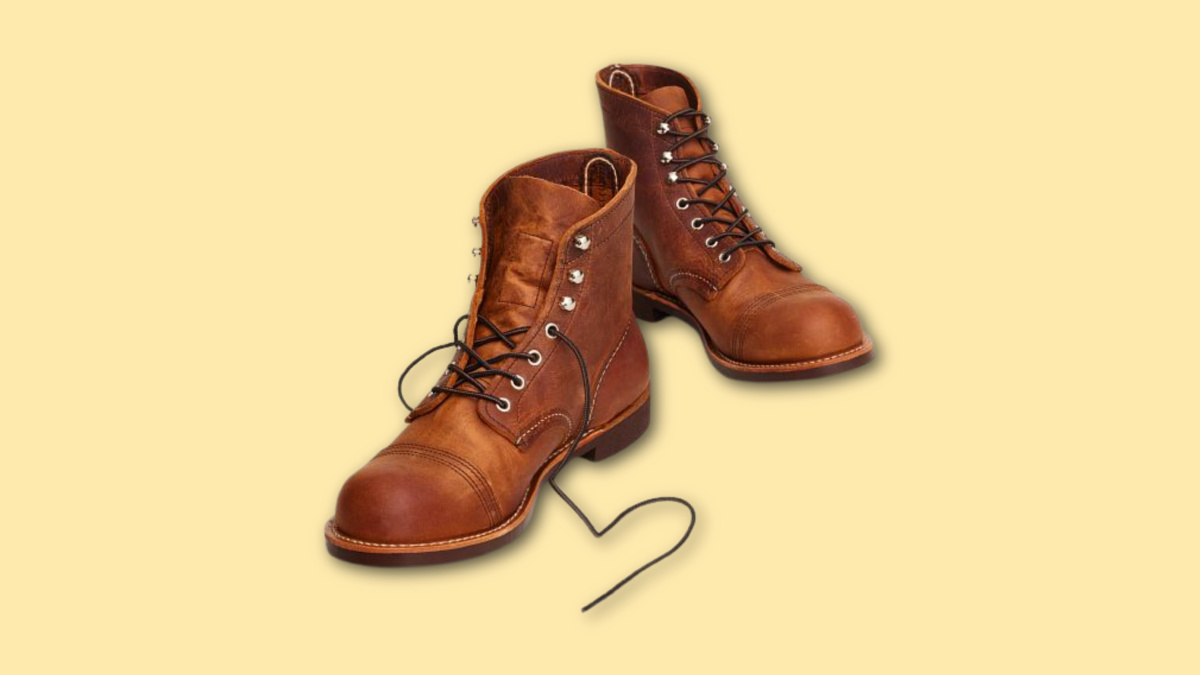
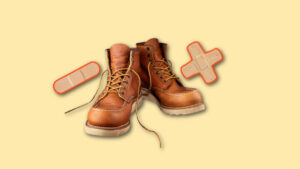
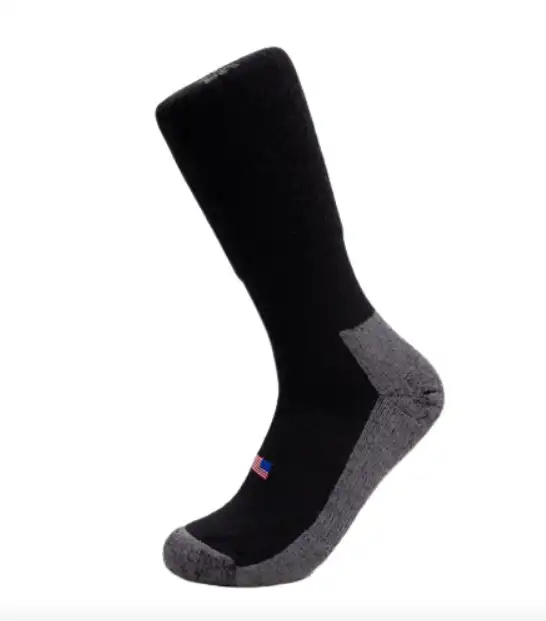
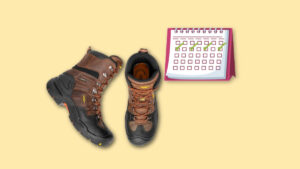
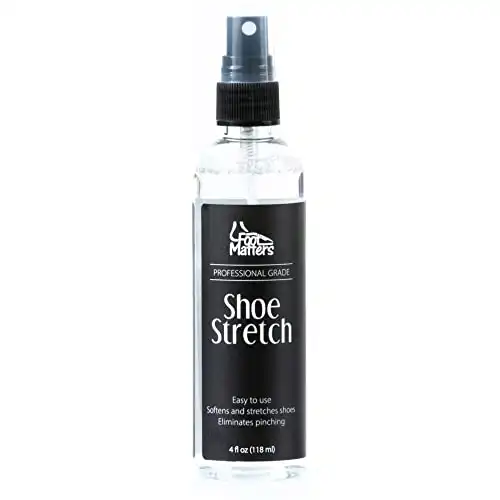
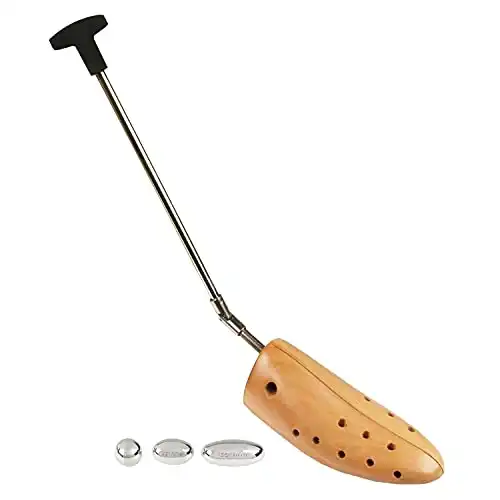
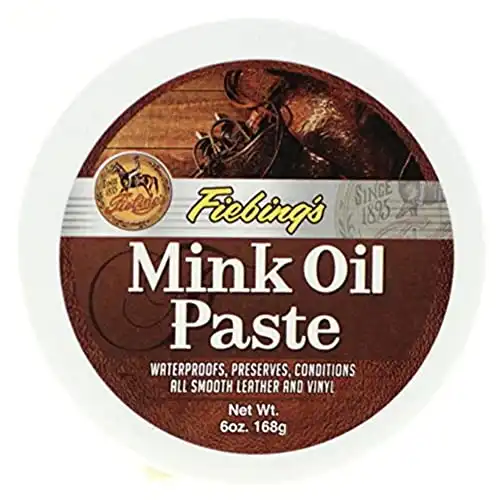


Join the Discussion